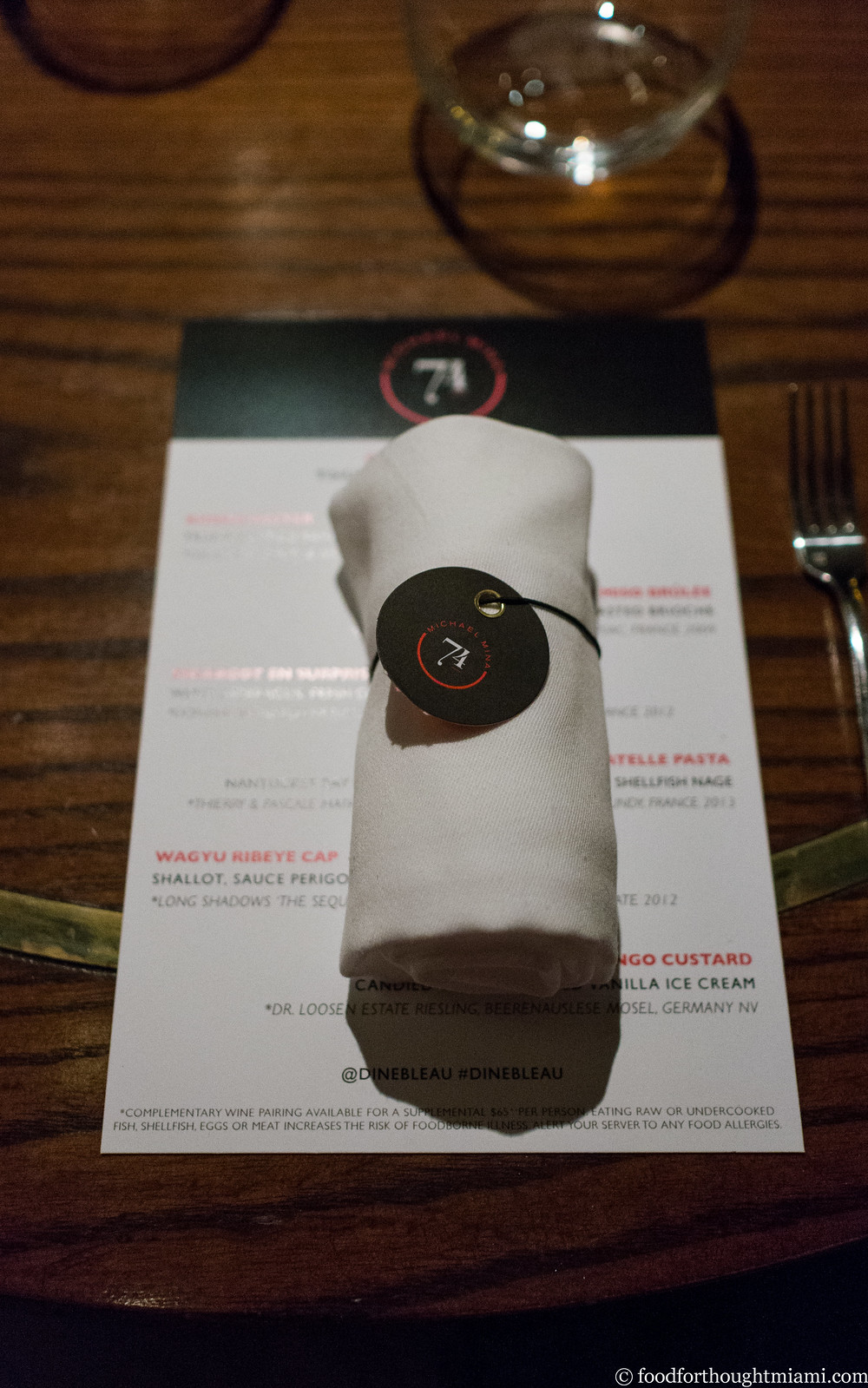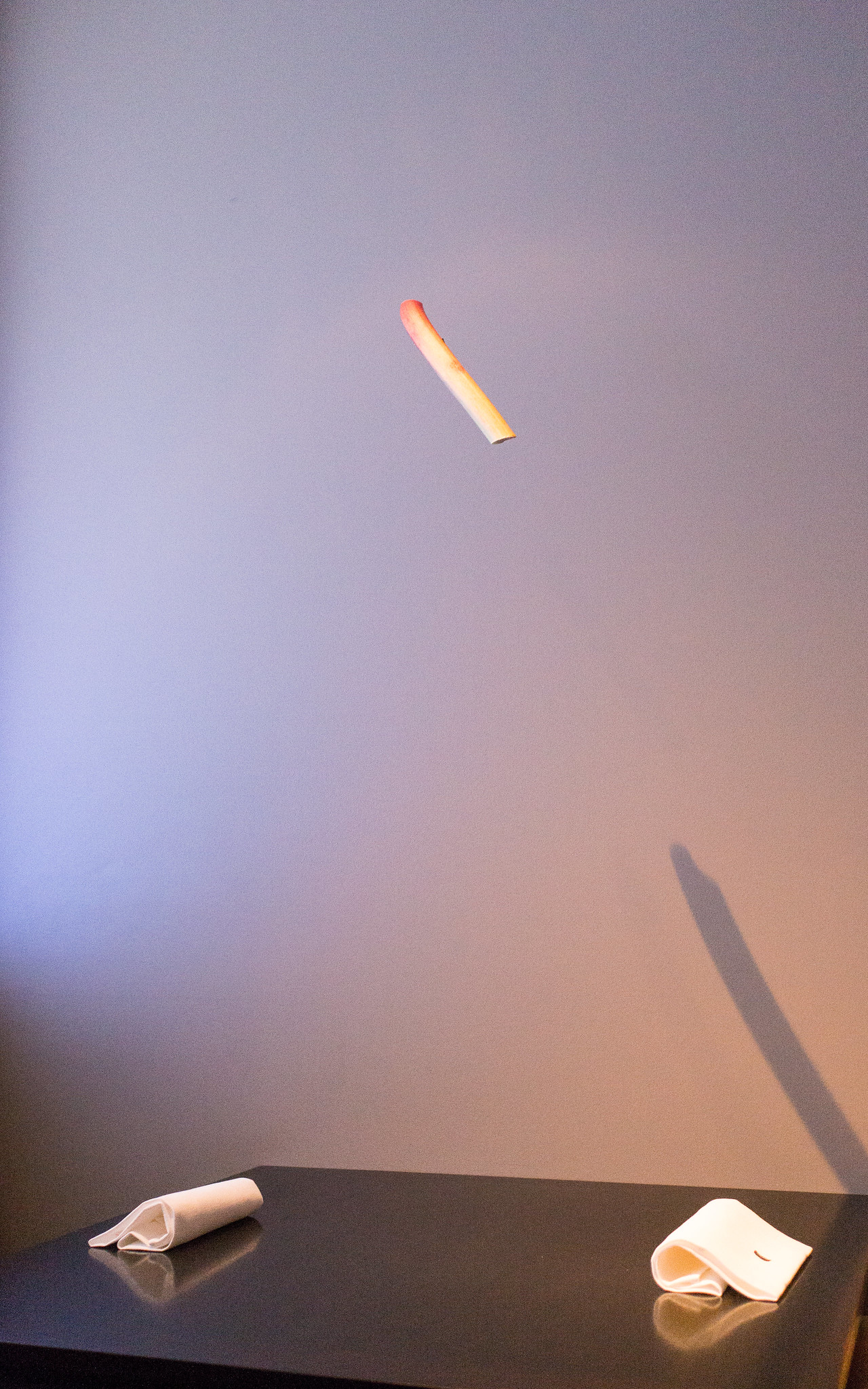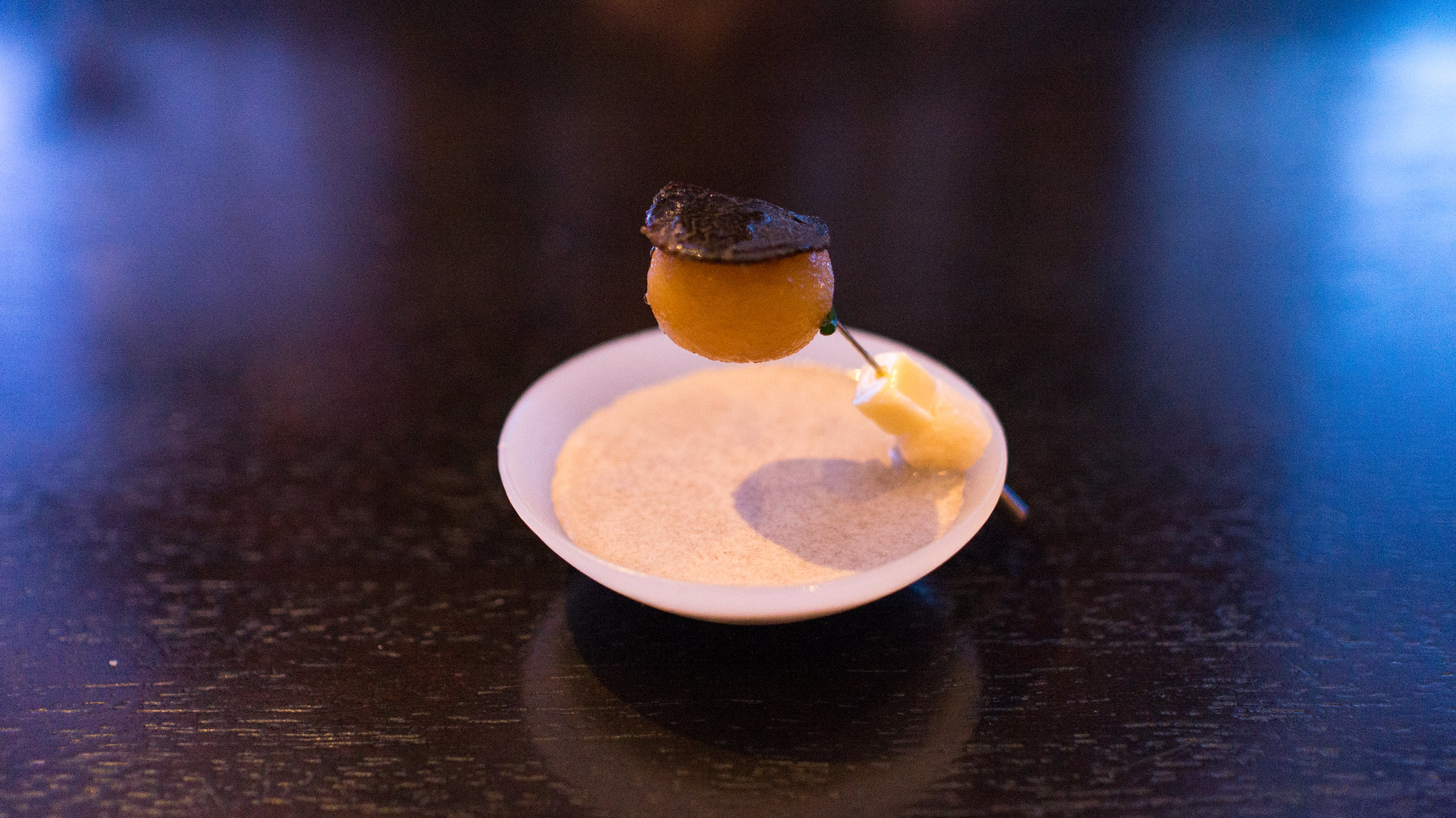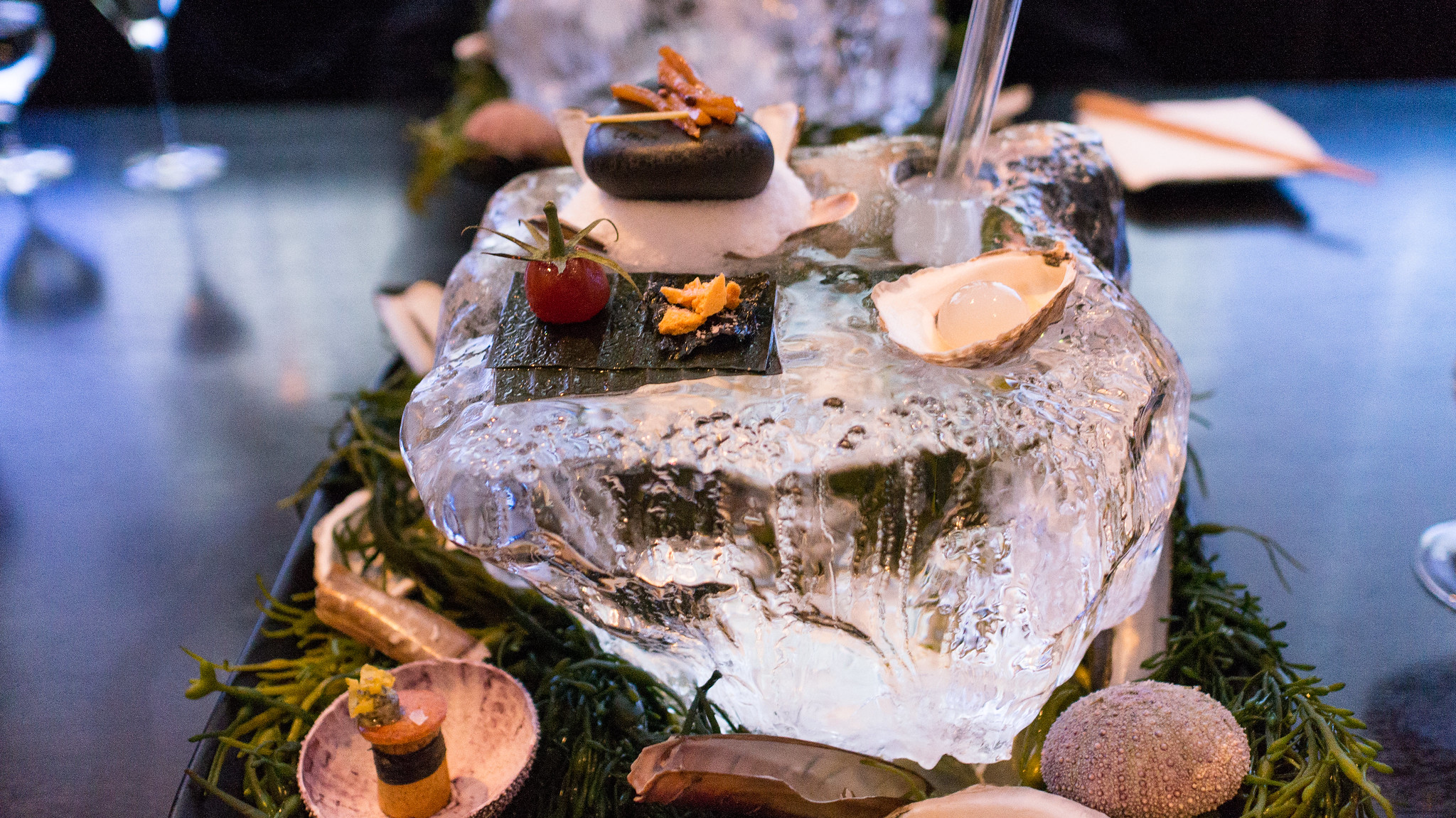(You can see pictures of all of the dishes listed in this Best Dishes of 2016 flickr set).
 |
| vitello tonnato - Andrew Zimmern at Vagabond Cobaya / SOBEWFF dinner |
Most folks probably know Zimmern from his James Beard Award winning Travel Channel program, Bizarre Foods. What they may not know is that the guy can also flat out cook. In addition to a silky vichyssoise with a citrus-cured oyster that was served as guests gathered around the Vagabond's poolside bar, he also was responsible for my favorite course of the evening: a riff on an Italian classic, vitello tonnato, done here with thin slices of veal tongue, a tangy anchovy-laden dressing, citrus segments, chile oil spiked fried capers and slivered olives for some punch, and crispy chickpea crackers for scooping.
Whenever we do a Cobaya dinner on our own, people generally know they're going to be in for something a bit different and adventurous. But seats at the SoBeWFF dinner get filled by all sorts of folks, including many who may not quite know what they're in for. So one of the highlights of the evening for me was Zimmern making sure to wait until everyone was about four bites into the dish before giving its description, and letting everyone know that he'd used veal tongue. I'd guess that about a quarter of the diners' jaws dropped. It makes me even more grateful for the support and open-mindedness of the group who come out to our regular dinners.
One of the really great things about this event was to see the teamwork of the chefs and their crews in the kitchen. As Carlo Mirarchi and his pastry chef Sam Short started to plate their dessert, everyone else jumped onto the line to help. The end result was outstanding: a nutty, burnt lemon cake, surrounded by a couple globes of coconut "fluff," with puddles of fragrant meyer lemon curd, a sort of celery jam, and sweet poppy seeds. Too often, these savory-leaning desserts feel contrived; but here, everything improbably made perfect sense together.
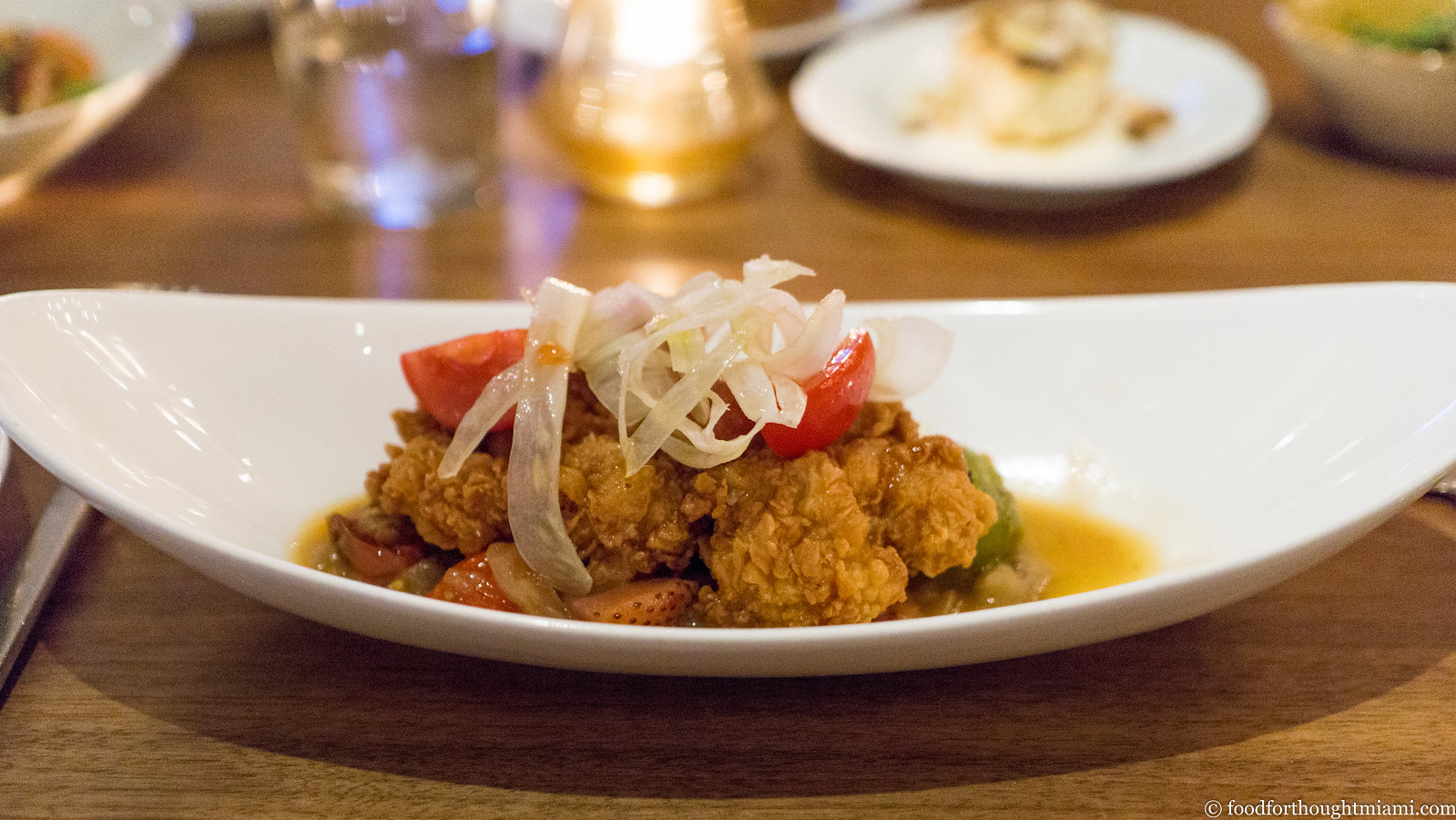 |
| sweetbread, tomato, fennel, pickled strawberry - Cena by Michy |
The decor and menu have changed at Cena by Michy (f/k/a Michy's), but at least one thing remains the same: if there is a sweetbread dish on the menu at a Michelle Bernstein restaurant, it will be outstanding. Case in point: this sweetbread milanese, like a cloud encased in a crispy shell. It's served with a tangy sort of stew of cherry tomatoes and fennel ribbons, with a wonderful little surprise: pickled strawberries, which provide little jolts of refreshing, sweet-tart contrast.
 |
| clams and rice - Bazi |
This is the kind of thing a chef does because they really want to, and maybe because they're a little crazy. Let's not dwell too long on how much this truly resembles a traditional Japanese kaiseki dinner (short answer: not too much). Instead, let's talk about the best thing I ate there: the clams and rice dish Pirolo served as one of the courses.
In this one dish, Pirolo ties together his Italian background and his Japanese ambitions. Diced razor clams are combined with chewy but tender viaolone nano rice, all served in the clam's shell. The rice is prepared in classic "all'onda" fashion, and bound with the clams by an uni vinaigrette which further highlights the flavors of the sea. A shower of fresh lemon balm adds a bright, herbaceous, citrusy note. It's a beautiful dish.
 |
| valley between Andes | avocado, tree tomato, kiwicha - Alter / Central dinner |
"Valley Between Andes" – I later figured out that Martinez's menu at Central features dishes inspired by the products of different elevations of the Peruvian topography. This one included avocado, tree tomato (a/k/a tamarillo), and kiwicha (amaranth seeds). The avocado was so creamy and rich that it almost ate like tender braised beef, napped with a tangy sauce and speckled with the nutty, quinoa-like kiwicha, with shards of translucent, herb-dotted crackers for some textural contrast.
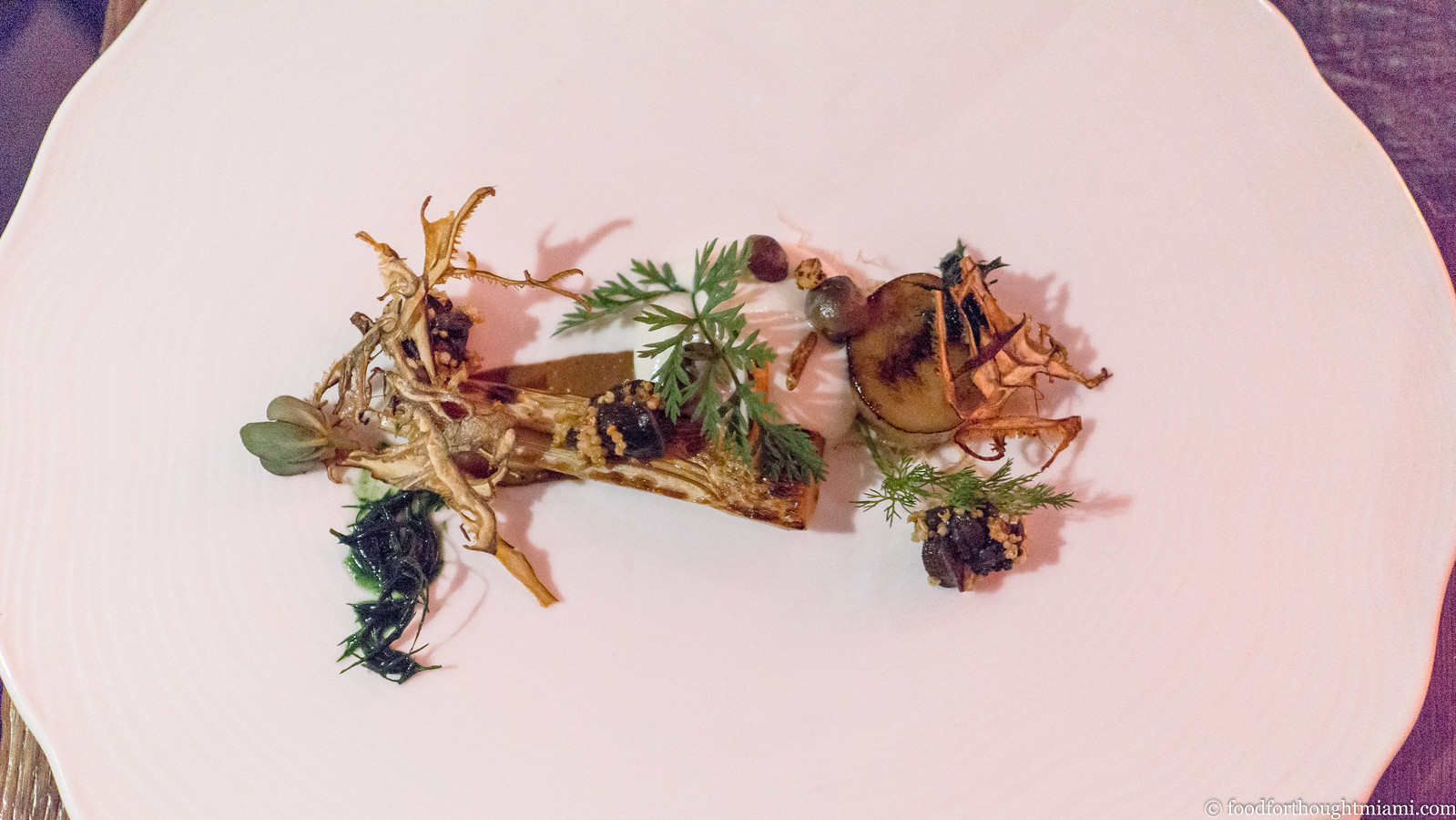 |
| fallen tree | heart of palm, snails, fungi, moss, spores - Alter / Central dinner |
"Fallen Tree" – Brad started with a caramelized tranche of heart of palm as the base of the dish, with the other components evoking a tropical forest floor: snails, dehydrated mushrooms, a tangle of green (seaweed?) moss, a pouffe of spring garlic mousse with pickled honshimeji mushroom "spores" poking up out of it.
(continued ...)


